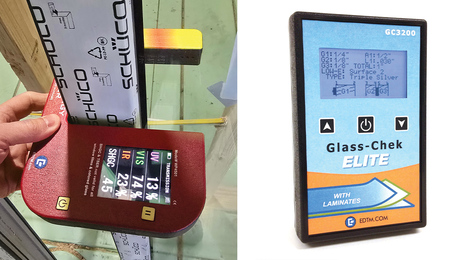If I add a 3 1/2″ thickness to the inside of a bedroom I’m remodeling and put in additional R12 batts, do I need to remove the old sheetrock first? Same question for a vaulted ceiling. I’m in the Seattle area so it’s damp here. Thanks
Discussion Forum
Discussion Forum
Up Next
Video Shorts
Featured Story

New devices showcased at the Builders' Show make it easy to measure glass performance, u-factor, SHGC, window thickness, and more.
Highlights
"I have learned so much thanks to the searchable articles on the FHB website. I can confidently say that I expect to be a life-long subscriber." - M.K.
Fine Homebuilding Magazine
- Home Group
- Antique Trader
- Arts & Crafts Homes
- Bank Note Reporter
- Cabin Life
- Cuisine at Home
- Fine Gardening
- Fine Woodworking
- Green Building Advisor
- Garden Gate
- Horticulture
- Keep Craft Alive
- Log Home Living
- Military Trader/Vehicles
- Numismatic News
- Numismaster
- Old Cars Weekly
- Old House Journal
- Period Homes
- Popular Woodworking
- Script
- ShopNotes
- Sports Collectors Digest
- Threads
- Timber Home Living
- Traditional Building
- Woodsmith
- World Coin News
- Writer's Digest


















Replies
If I recall correctly, the rule of thumb is that a vapor barrier should not be more than 2/3 deep in an insulated wall. (From conditioned to unconditioned side.)
Considering the existing drywall as a possible vapor barrier, and assuming that the existing wall has about the same amount of insulation, it would probably be OK.
OTOH, I'd be a bit concerned about the existing penetrations in the wall: e.g., receptacles, as a potential concentration point for water vapor migration through the "drywall vapor barrier."
Hopefully someone who really knows will jump in.
This book is a good source for your answer.
"Builder's guide to Mixed Climates" by Joseph Lstiburek; Taunton Press 1997
I think a second wall is fine here, but would not put a vapor barrier in or use batts with a vapor barrier in that second wall.
Also, think sound barrier here. To do that , thesecond wall should not touch the first, and you can use foam strips or rubber on the top and bottom plates as isolaters. http://www.conservationtechnology.com/building_gaskets.html
I am not an expert here, though and the pros might be more informative.
Sounds good
to me ... If you have any moisture problems now, you want to take more care, maybe. your climate is mild, temps usually not severe. You could determine your condensation point/condition given your new wall and your general climate/indoor condition if you are concerned about it.
Have you considered other options? Why are you adding the second wall? What about e.g. rigid insulation w/ new drwall screwed to the existing studs?
As the other poster mentioned ... may be issues w/ e.g. outlet boxes. BTW ... how ARE you handling outlet boxes in your renovation?
Concepts often are simple and easy ... it's the details that are often messy.
If Rez were around............
This quote would have been certainly entered into the hall of fame.
Concepts often are simple and easy ... it's the details that are often messy.